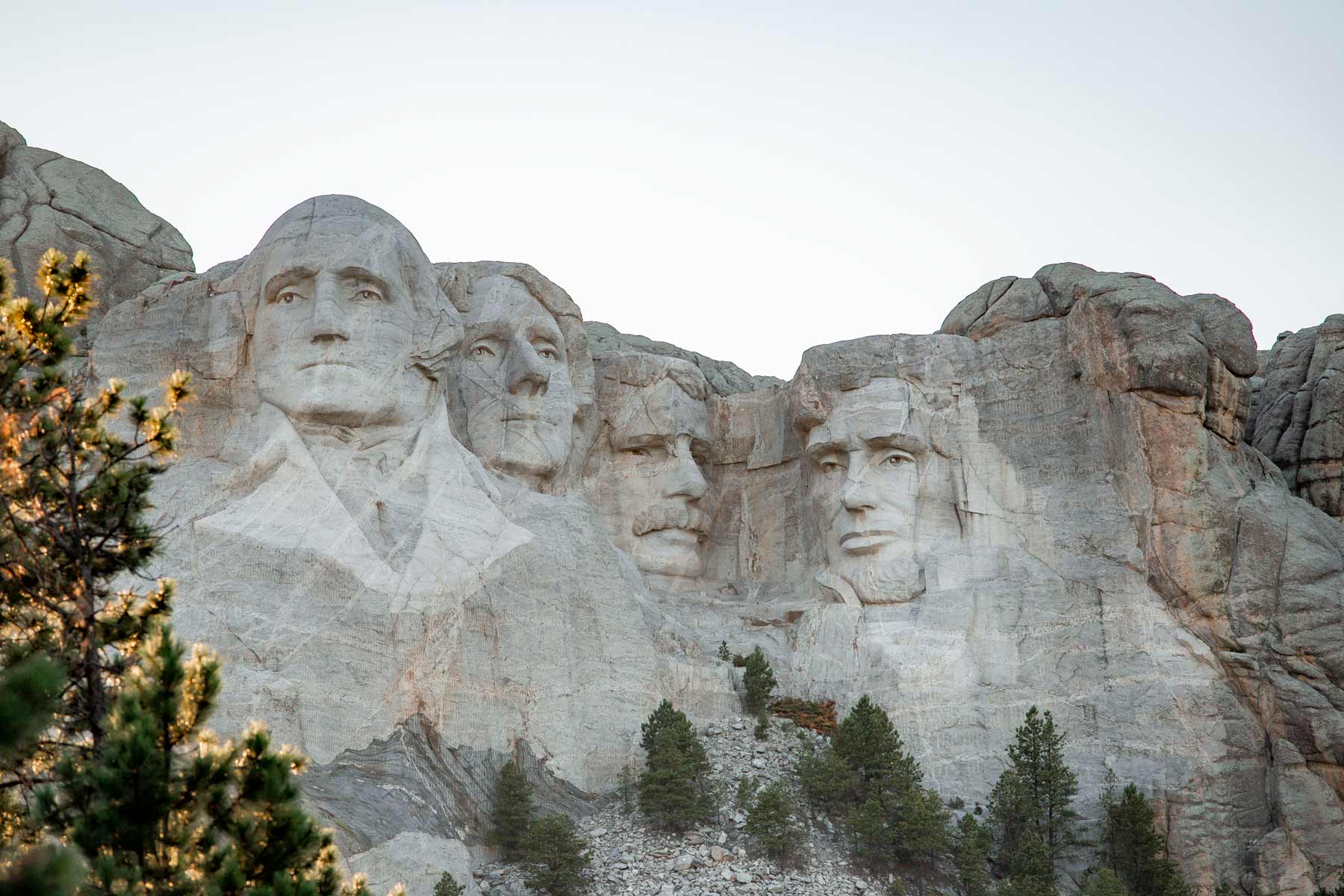
Article Summary: South Dakota National Parks
South Dakota National Parks! We’ve got six incredible national park sites for you to see on your next visit to the Mount Rushmore State.
Of all the states in America I find the air in South Dakota, particularly in the Badlands, to be the finest. There’s something truly magical about this state and its public lands.
I’ve been to so many of these amazing places since retiring from teaching in 2018. Did I mention that I taught history? I spent a lifetime teaching about the history behind these momentous sites. Then I got to see them firsthand. And now I’m sharing the stories of these incredible places with you. It doesn’t get any better than that!
South Dakota National Parks includes two national parks, two national monuments, and more.
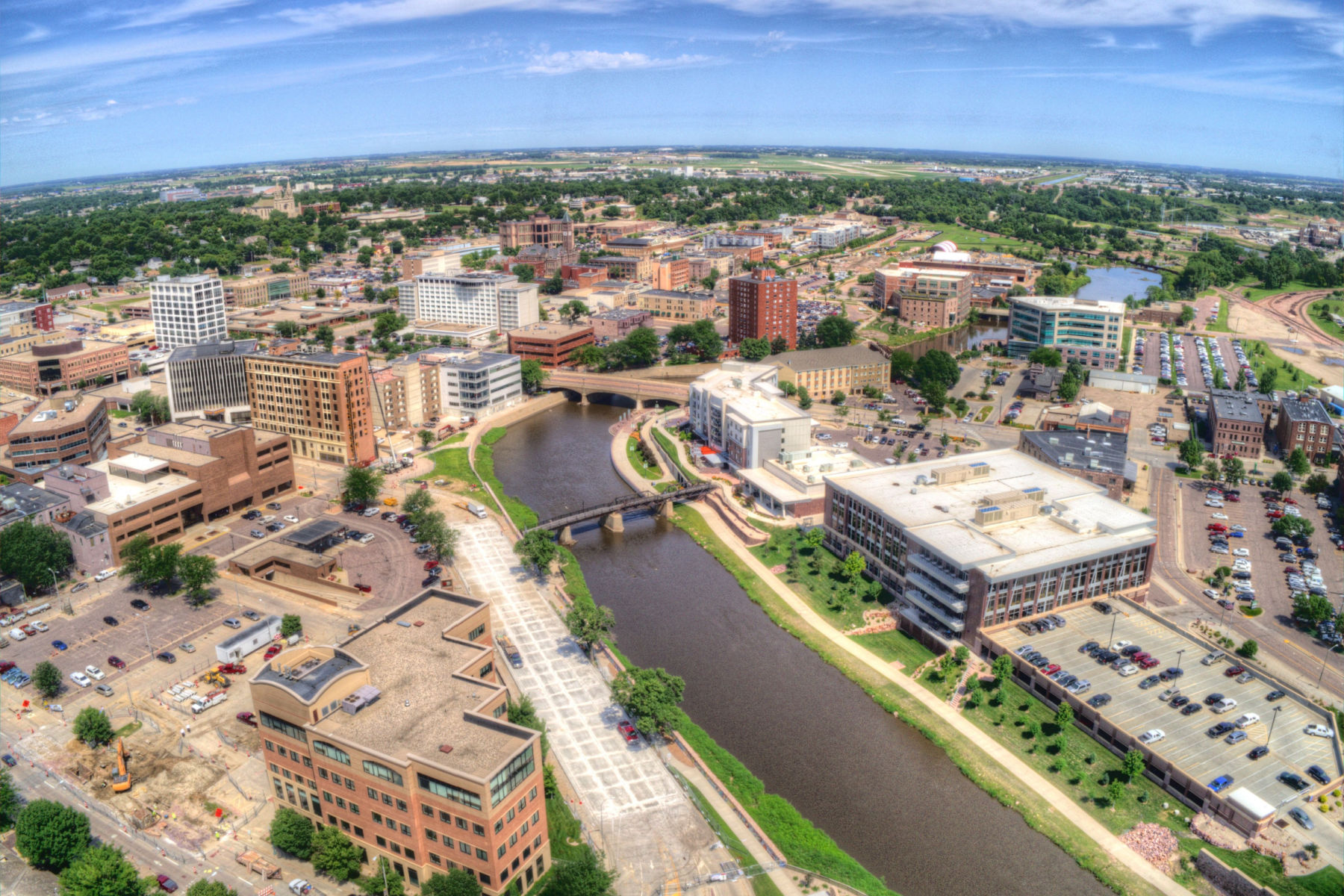
So, What Is A National Park?
We get asked that question a lot because there’s a difference between a “national park” and a “national park site.” To help you understand that difference you might want to check out our article titled: What Is A National Park Really?
If you’re planning a trip to the Mount Rushmore State then one book that I highly recommend is: Greater Than a Tourist- South Dakota: 50 Travel Tips from a Local by Max Hunoff.
We’re going to give you six reasons why you’ll want to make South Dakota your next vacation destination.
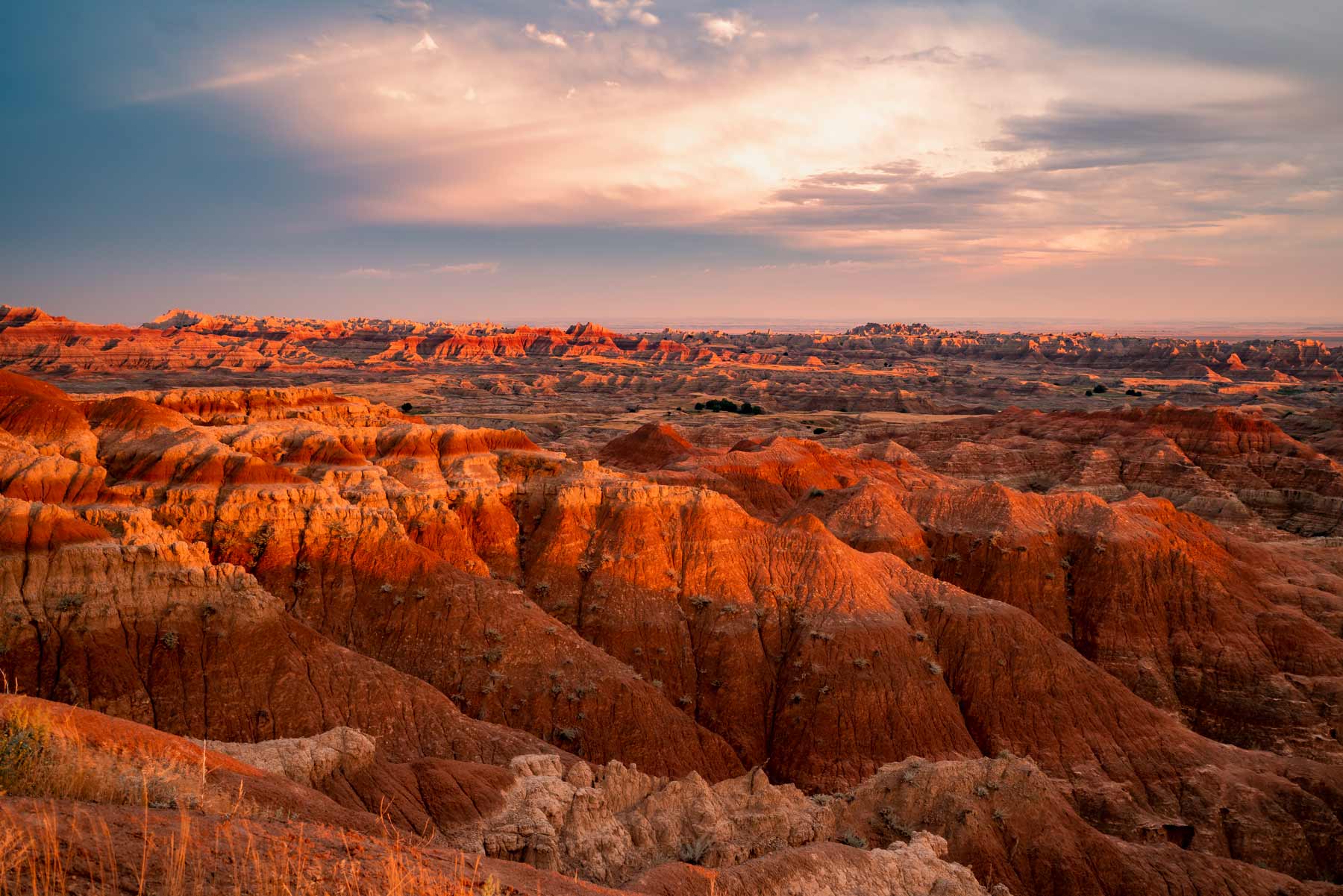
Table Of Contents: South Dakota National Parks
South Dakota National Parks
1. Badlands National Park
South Dakota National Parks are truly wonderful and well worth a visit almost any time of year. One of my favorites is Badlands National Park.
Badlands National Park is located in southwestern South Dakota, and was established as a national park in 1978.
The area has a rich cultural history, with evidence of human habitation dating back thousands of years. The park’s unique geological formations, consisting of layered rock formations and deep canyons, have been shaped over millions of years by erosion and weathering.
The Badlands have been home to many different species of plants and animals, including bison, bighorn sheep, and pronghorns, and have been a popular spot for hunting and grazing for indigenous peoples and settlers.
In the late 19th and early 20th centuries, the area became a popular tourist destination, and efforts to preserve the unique landscape led to its designation as a national park.
Today, Badlands National Park attracts visitors from around the world and is a protected area for the enjoyment of present and future generations.

Things To Do In Badlands
Badlands National Park offers a variety of activities for visitors to enjoy:
- Hiking: There are several trails available for visitors to explore, ranging from easy nature walks to more challenging hikes through the park’s rugged terrain.
- Scenic drives: The Badlands Loop Road offers a scenic drive through the park, with several pullouts and overlooks where visitors can take in the stunning views.
- Wildlife watching: The park is home to a diverse range of wildlife, including bison, bighorn sheep, pronghorns, and black-tailed prairie dogs. Visitors can drive or hike through the park to see these animals in their natural habitat.
- Photography: The unique landscape of the Badlands provides many opportunities for stunning photographs, whether it be the vibrant colors of the rock formations or the wildlife that calls the park home.
- Camping: There are two campgrounds within the park, as well as backcountry camping options for visitors who want a more remote experience.
- Ranger-led programs: The park offers a variety of ranger-led programs, including guided hikes, evening campfire programs, and educational presentations.
- Fossil digs: The Badlands is known for its rich fossil record, and visitors can take part in guided fossil digs to learn about the park’s geologic history.
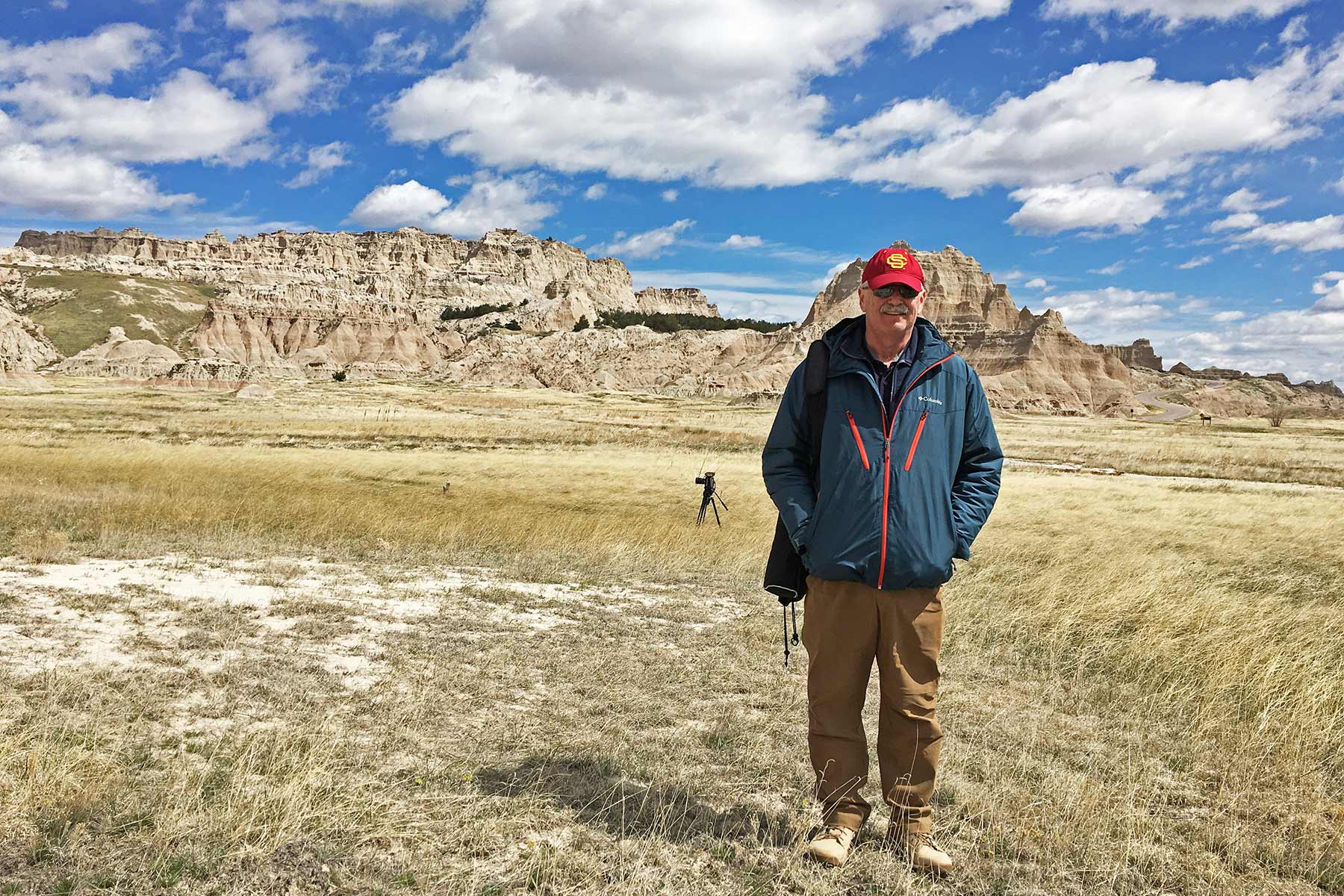
Journey With More Than Just Parks To The Badlands
Encompassing 244,000 acres of otherworldly landscapes, Badlands National Park is home to massive towering spires, deep canyons, oceans of undisturbed mixed grass prairie, ancient fossil remains, and one of the last refuges for the largest mammal in North America – the American Bison.
Journey with us to discover a rugged land teaming with incredible wildlife, pristine natural habitat, and endless opportunities for unbounded adventure.
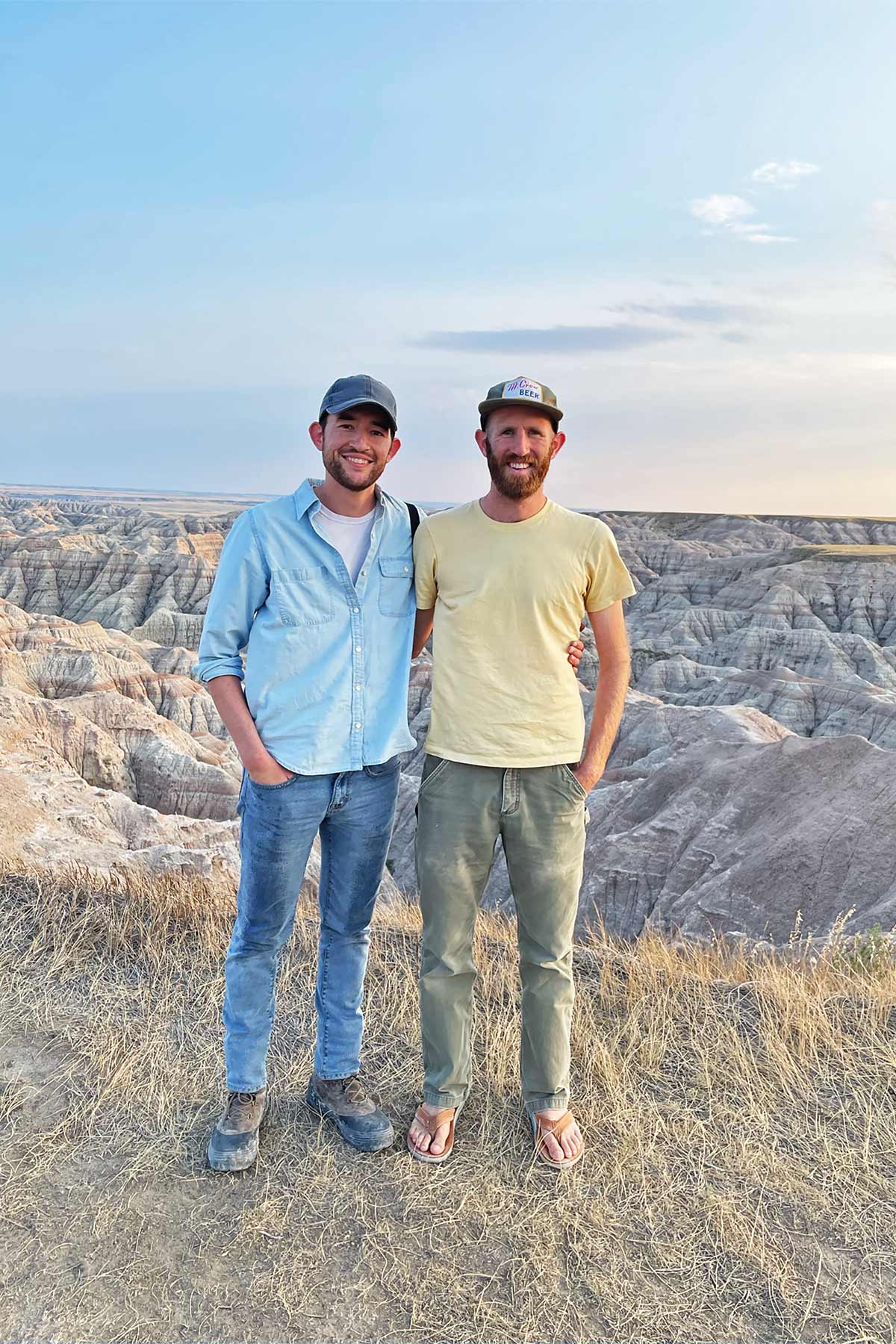
If you’re looking for things to do in the Badlands check out our article: 18+ (INCREDIBLE) Things to Do in Badlands National Park
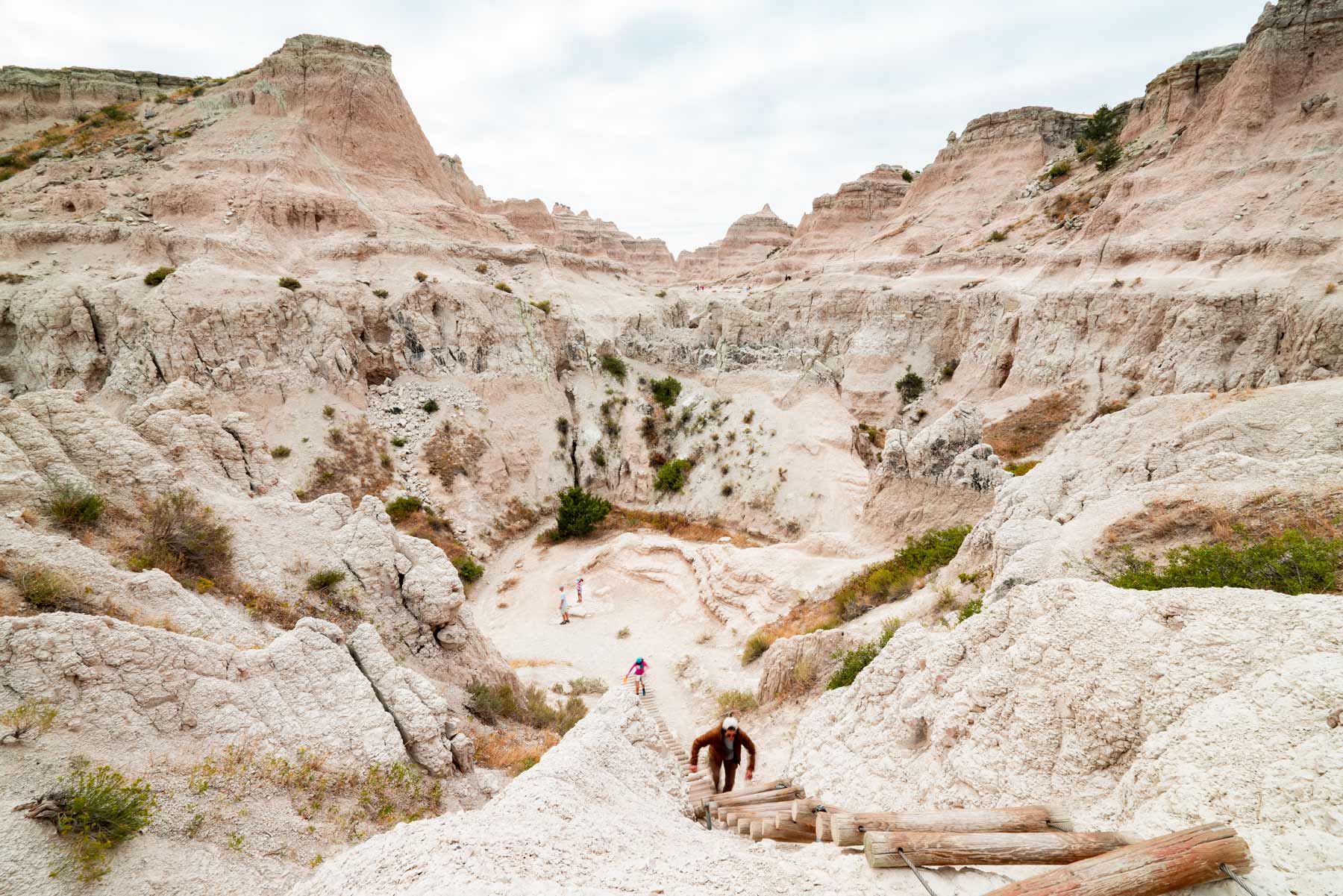
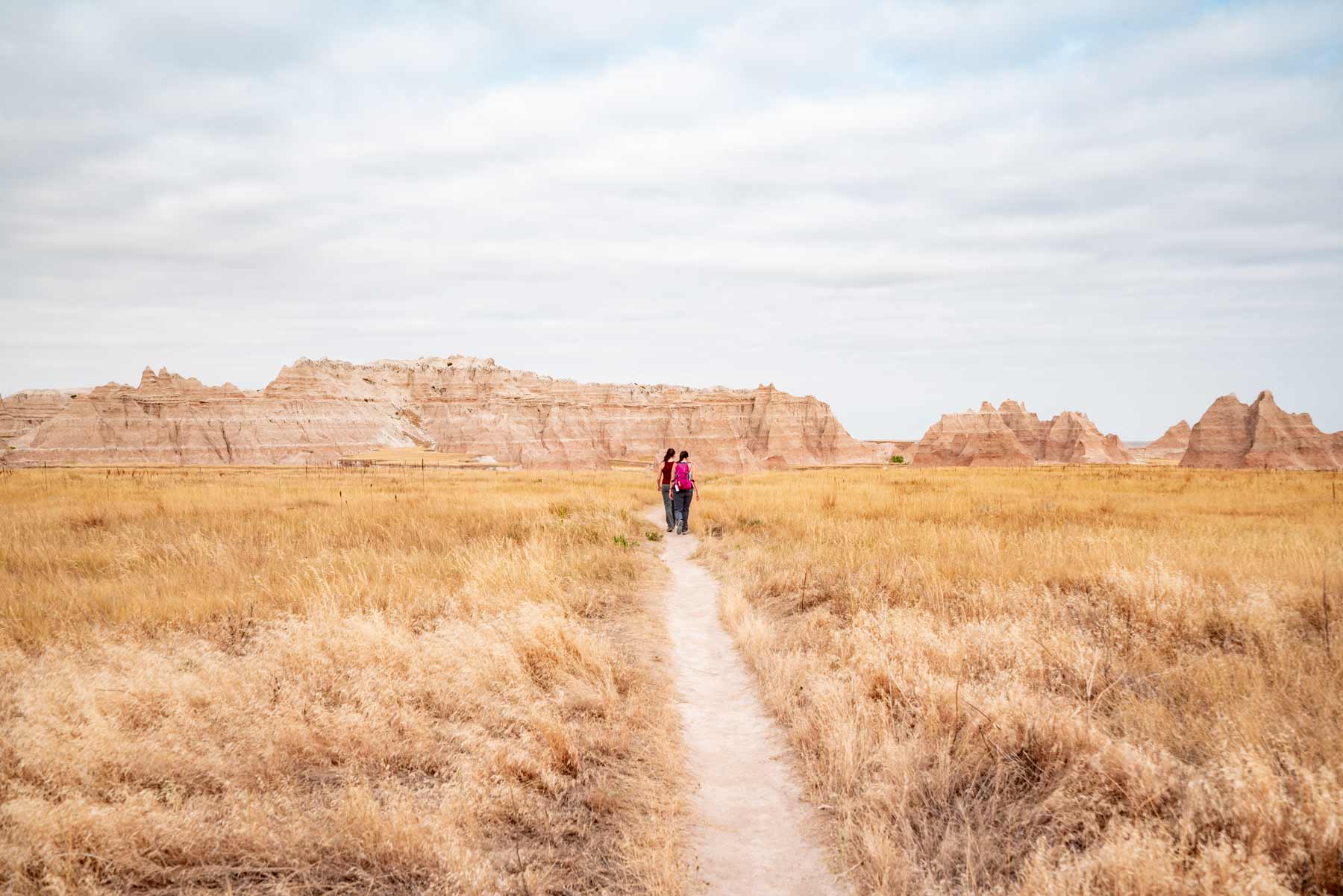
CHECK OUT: 10 AMAZING Facts About Badlands National Park
2. Jewel Cave National Monument
Another one of the amazing South Dakota National Parks is Jewel Cave National Monument.
Jewell Cave National Monument is located in the Black Hills of South Dakota, and was established as a National Monument in 1908.
The cave was discovered in the late 19th century by two brothers, who named it after a nearby rancher, Alvin Jewell. It quickly gained popularity, and by the early 20th century, it was a popular tourist destination. The cave’s intricate and colorful formations, as well as its large size, led to its designation as a National Monument.

The Total Length Of The Cave System Exceeds 200 Miles
Over the years, the cave has been explored and mapped, with the total known length of the cave system now exceeding 200 miles. Jewell Cave has also been used for scientific research, including studies of the cave’s geology and biology, as well as its history as a source of minerals, including calcite and quartz.
Today, Jewell Cave National Monument attracts visitors from around the world, who come to explore its unique underground landscape and learn about its rich history and scientific significance. The monument offers guided tours of the cave, as well as ranger-led programs and educational activities.
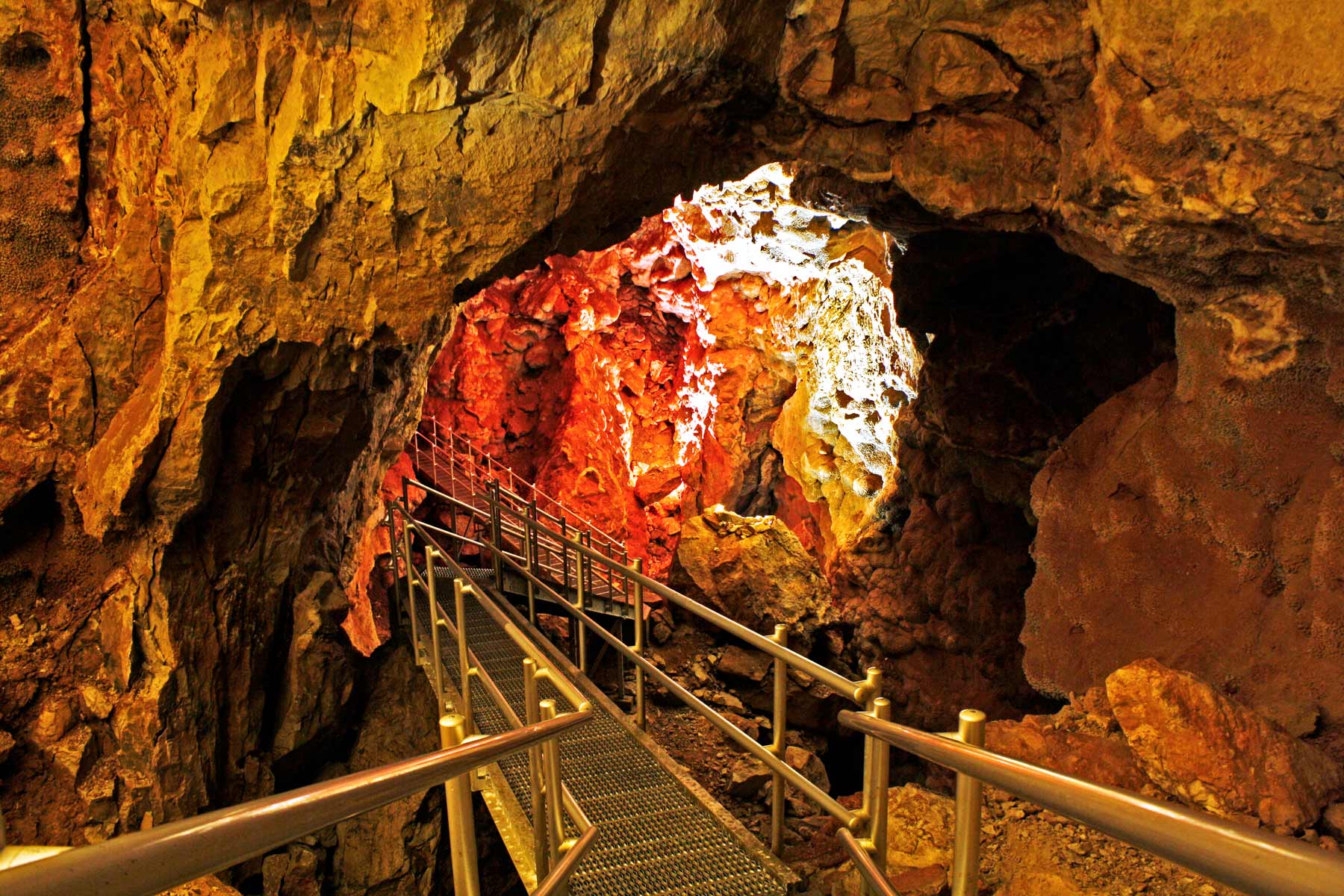
Things To Do At Jewell Cave
Here are some things you can do at Jewel Cave National Park:
- Take a cave tour: The most popular thing to do at Jewel Cave National Park is to take a guided cave tour. There are several tour options available, ranging from easy to challenging, so there’s something for everyone.
- Hiking: Jewel Cave National Park offers several hiking trails that lead through beautiful forests, canyons, and meadows. The trails range from easy to strenuous, so you can choose one that matches your fitness level.
- Wildlife watching: The park is home to a variety of wildlife, including elk, deer, bighorn sheep, and mountain lions. Keep your eyes peeled and you might see some of these animals during your visit.
- Picnicking: There are several picnic areas within the park where you can enjoy a meal surrounded by the natural beauty of the Black Hills.
- Ranger programs: The park offers a variety of ranger-led programs, including talks, walks, and educational programs for children. Check the park’s website for a schedule of events.
- Camping: There are two campgrounds within the park where you can pitch your tent or park your RV. The campgrounds offer basic amenities like toilets and water, and some sites have electrical hookups.
- Scenic drives: The park has several scenic drives that offer stunning views of the Black Hills. The Needles Highway is a particularly popular drive, with its winding roads and spectacular rock formations.
- Stargazing: Jewel Cave National Park is far from city lights, making it a great place to stargaze. On clear nights, you can see thousands of stars twinkling in the sky.
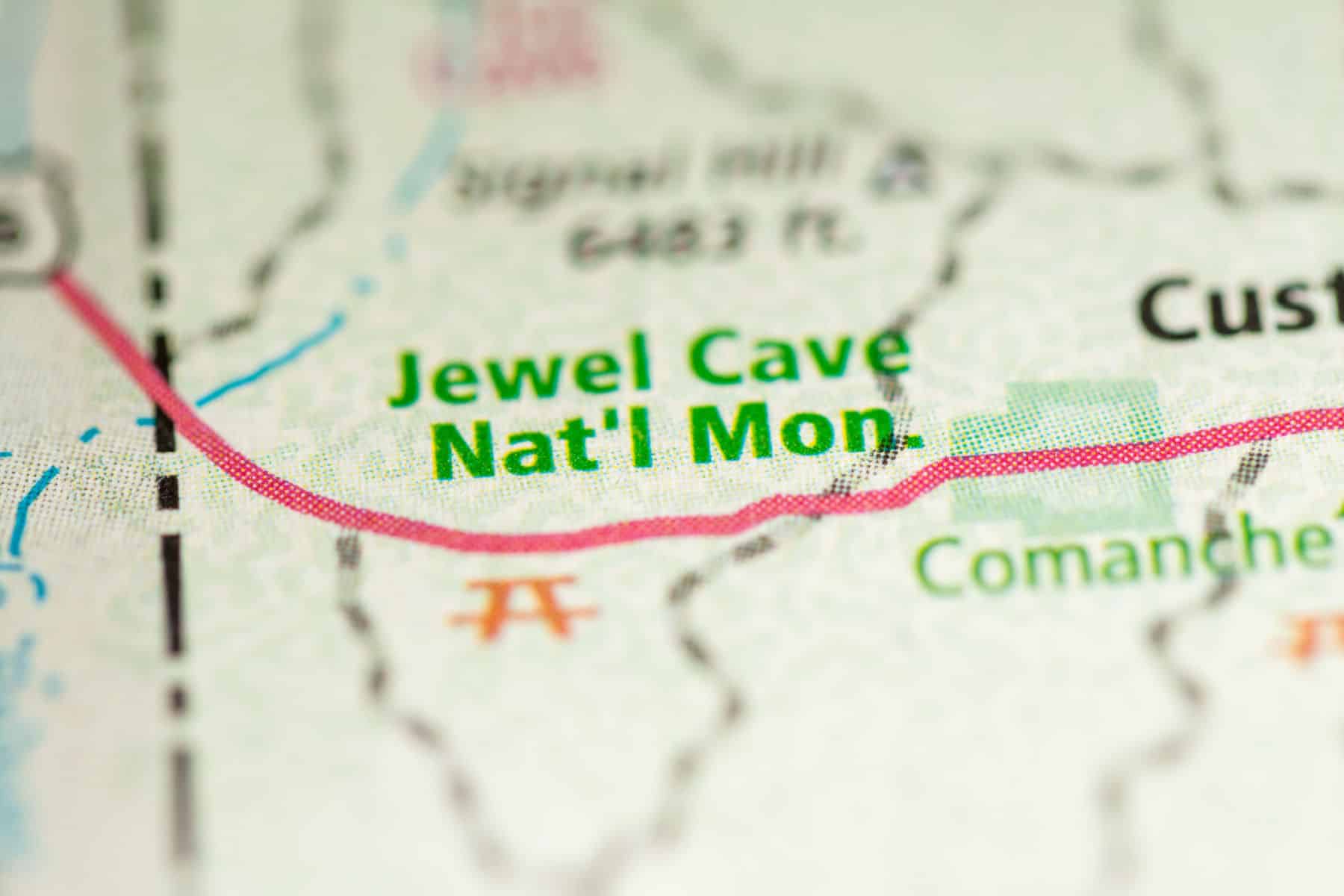
More South Dakota National Parks
3. Lewis & Clark National Historic Trail
Among the South Dakota National Parks is a legendary trail with commemorates two of America’s most intrepid explorers.
The Lewis & Clark National Historic Trail is a trail that roughly follows the route taken by the Lewis and Clark Expedition, a journey of exploration and discovery that took place in the early 19th century.
The expedition was led by Meriwether Lewis and William Clark, and its goal was to explore the western portion of the newly acquired Louisiana Territory and find a water route to the Pacific Ocean.
The Lewis and Clark Expedition set out from St. Louis, Missouri in May 1804 and traveled up the Missouri River, over the Rocky Mountains, and down the Columbia River to the Pacific Ocean.
Along the way, they encountered many new and diverse cultures, made important scientific discoveries, and paved the way for further westward expansion.
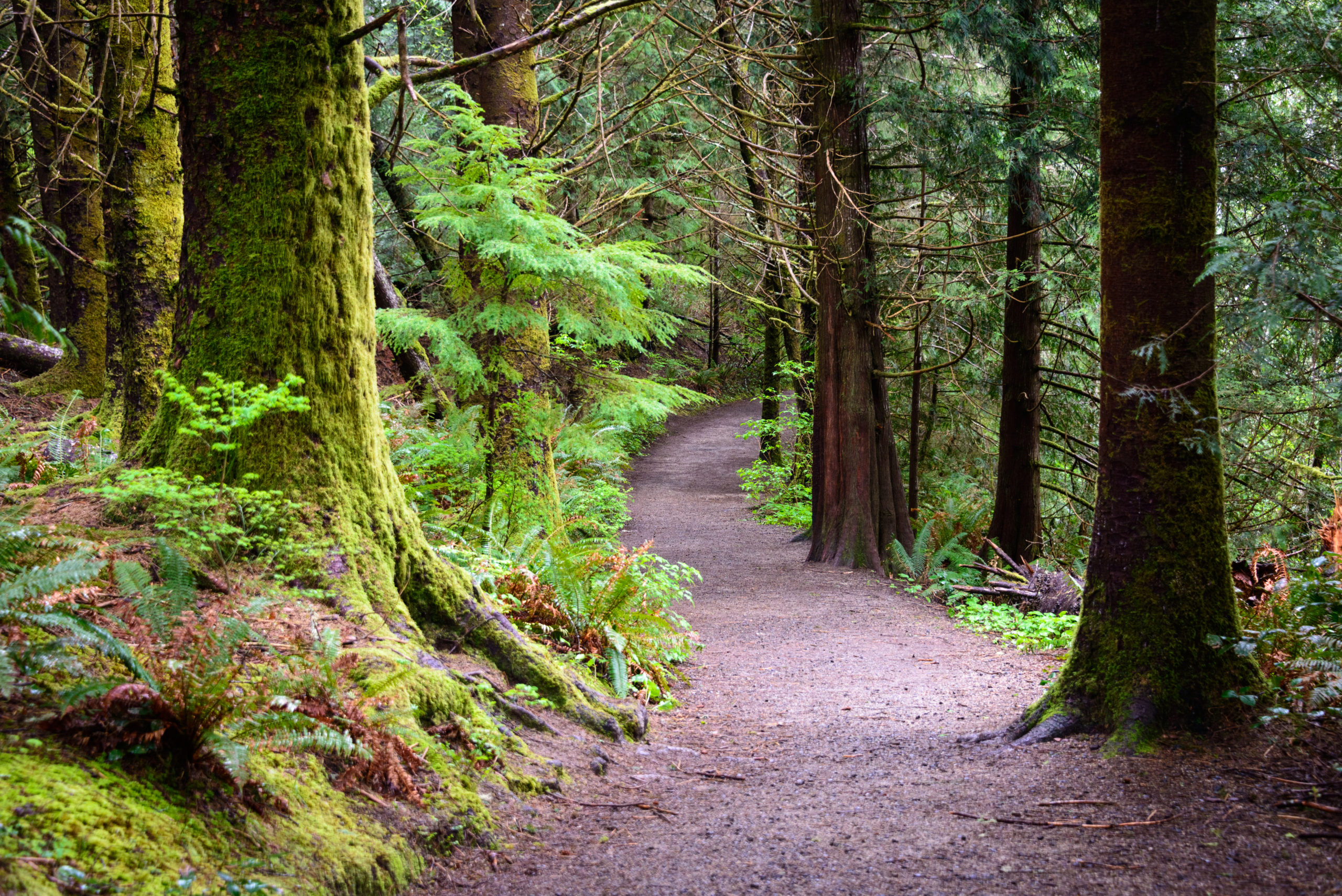
It Covers 4,000 Miles & Passes Through 11 States
The Lewis & Clark National Historic Trail was established by Congress in 1986, and it covers over 4,000 miles, passing through 11 states from Illinois to Oregon.
The trail is marked by signs and markers, and it offers opportunities for hiking, biking, and boating, as well as educational and interpretive activities.
Today, the Lewis & Clark National Historic Trail is an important part of American history and a popular destination for outdoor enthusiasts and history buffs.
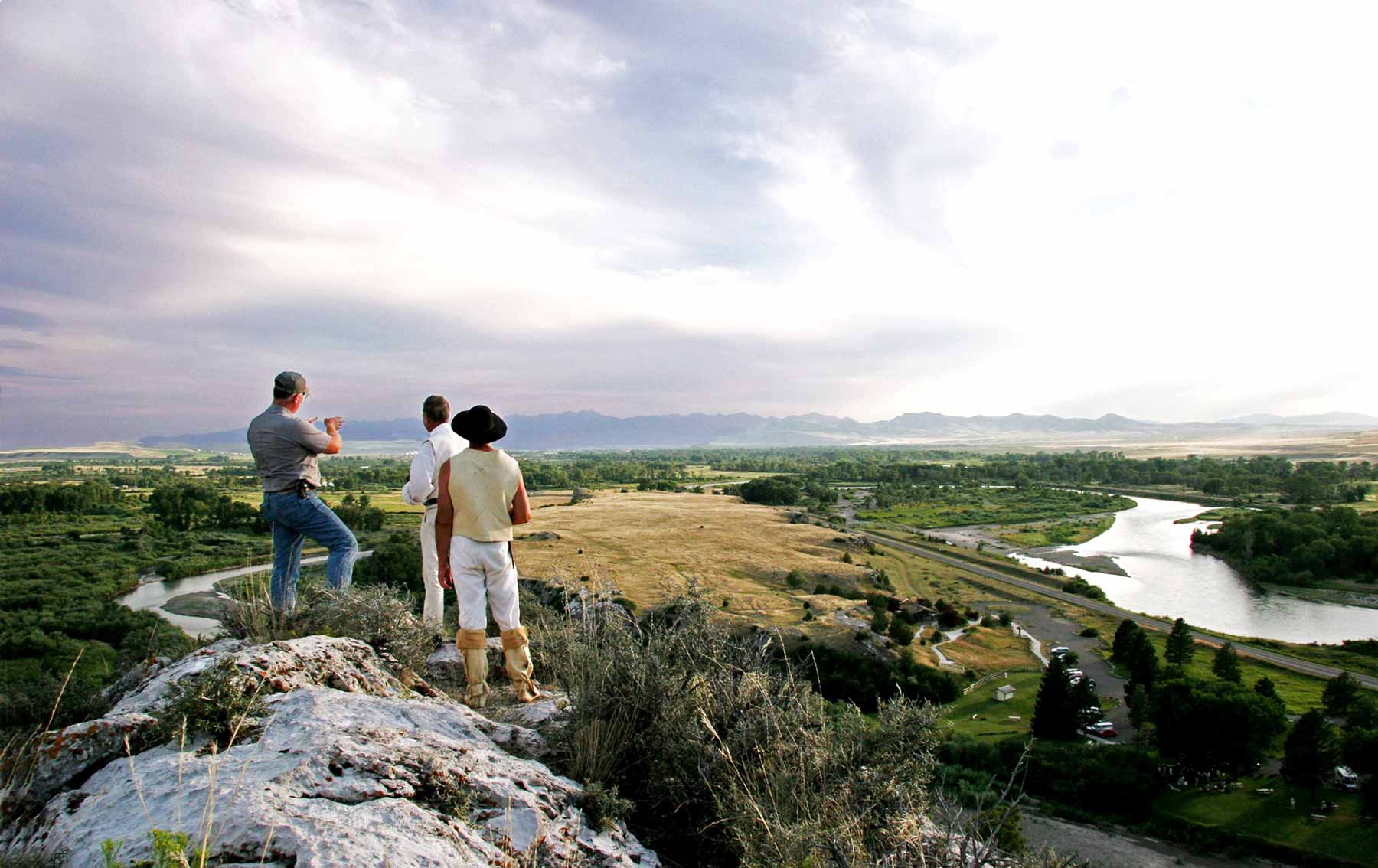
A clear cold morning with high wind: we caught in a trap a large gray wolf, and last night obtained in the same way a fox who had for some time infested the neighbourhood of the fort.
-Meriwether Lewis

4. Minuteman Missile National Historic Site
One of the lesser known yet fascinating South Dakota National Parks is Minuteman Missile National Historic Site.
Minuteman Missile National Historic Site was established in 1999. The site preserves a portion of the Minuteman II intercontinental ballistic missile (ICBM) system, which was an important part of the United States’ Cold War defense strategy during the mid-to-late 20th century.
The Minuteman II ICBM system was deployed in the 1960s and was designed to provide a rapid and devastating response to a nuclear attack on the United States. The missiles were stationed in underground silos, which were scattered across the Great Plains, and were operated by the United States Air Force.
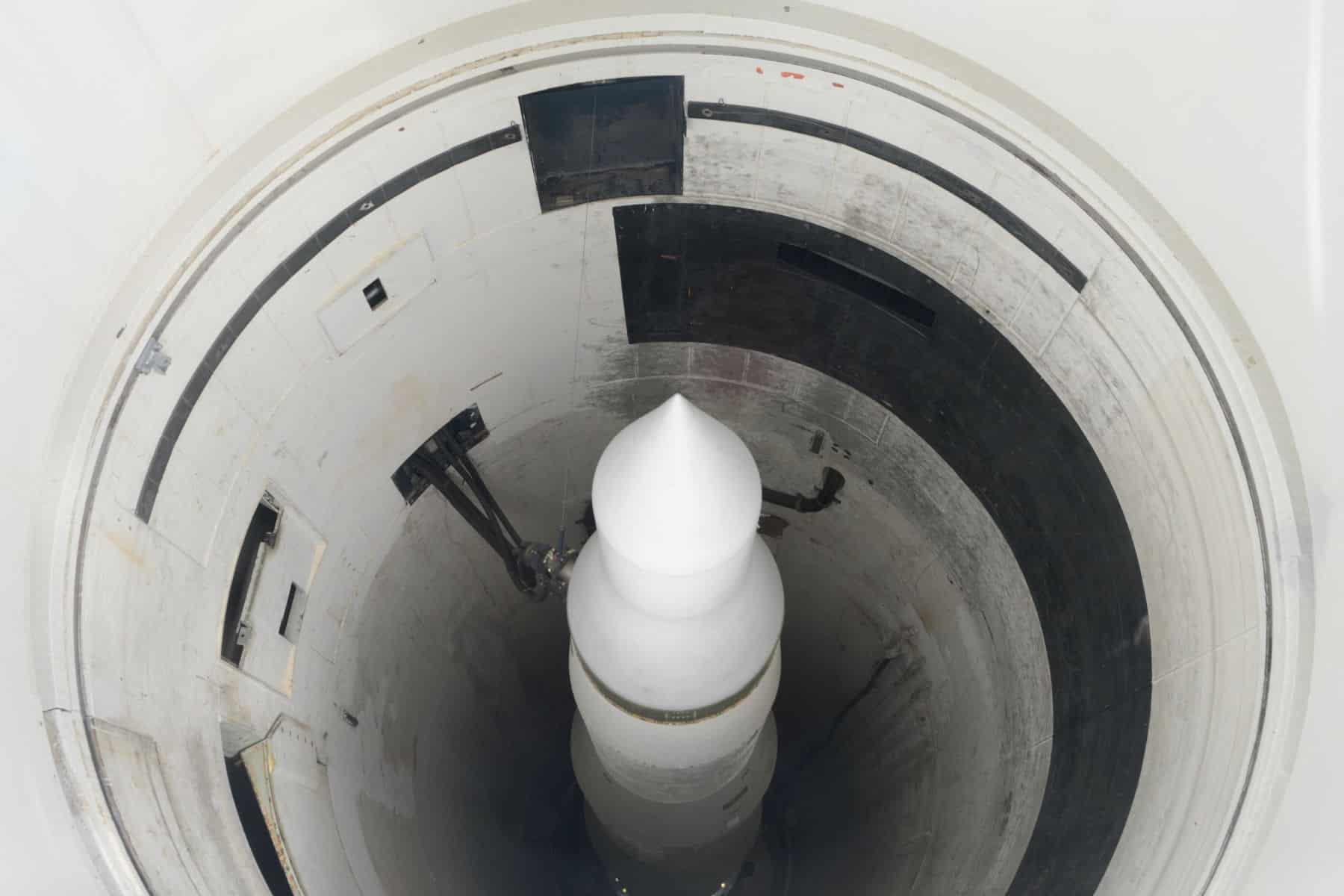
See A Part Of The Cold War Legacy
Minuteman Missile National Historic Site was established to preserve a portion of this Cold War legacy and to educate visitors about the history of the Minuteman missile system and its impact on the United States and the world.
The site includes a restored missile silo, a visitor center, and a museum, as well as opportunities for guided tours and ranger-led programs.
Today, Minuteman Missile National Historic Site is an important part of America’s Cold War history and serves as a reminder of the events and decisions that shaped the world during the 20th century.
The site provides visitors with an opportunity to learn about this important chapter in American history and to reflect on the dangers of nuclear weapons and the importance of peace and international cooperation.
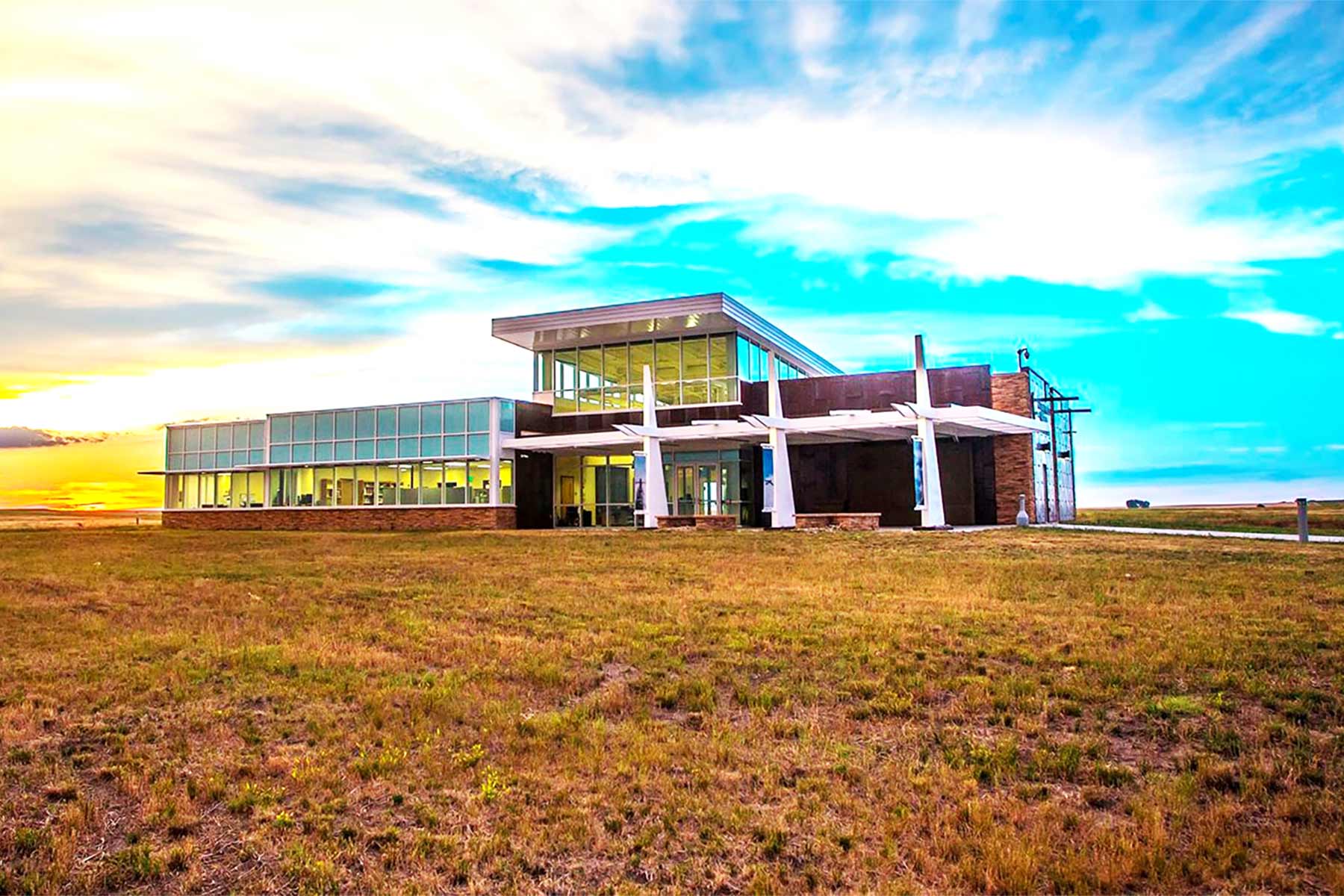
Things To Do At Minuteman Missile
As a retired history teacher, I have immersed myself in the fascinating history of this impactful period. I would recommend the following things to do:
- The Visitor Center: I always recommend that first-timers begin there. Exhibits, films, and a bookstore allow visitors to explore the story of the Minuteman Intercontinental Ballistic Missile System and its role in the larger context of the Cold War.
- The Bookstore: They offer books, educational materials, and interpretive items that relate to the themes of Minuteman Missile National Historic Site.
- The Mobile Tour: A Mobile Phone guided tour of Delta-09 and Delta-01 is available for visitors to learn the history of Minuteman Missile on the Great Plains and how it was operated for thirty years.
- The Delta 01 Launch Control Facility: Delta- 01 occupies an open, grassy tract of land approximately one-half mile north of Interstate 90. Approaching the site from the Interstate, it looks like a lone ranch house in the open grassland. There’s a thirty-minute guided tour of the control center at Delta-01 which begins with a walk through of the grounds and topside support building.
More South Dakota National Parks
5. Mount Rushmore National Memorial
South Dakota National Parks features one of the most iconic symbols in America. Of course I’m referring to Mount Rushmore National Memorial.
Mount Rushmore is located in the heart of the Black Hills which are full of really incredible sites including two national parks, two national monuments, a national forest, a national grassland, state parks, and more. Rushmore is one of the most visited national parks in South Dakota.
Contrary to popular belief, the faces on Mount Rushmore were not chosen by the US Government but rather the chief sculptor, Gutzon Borglum.
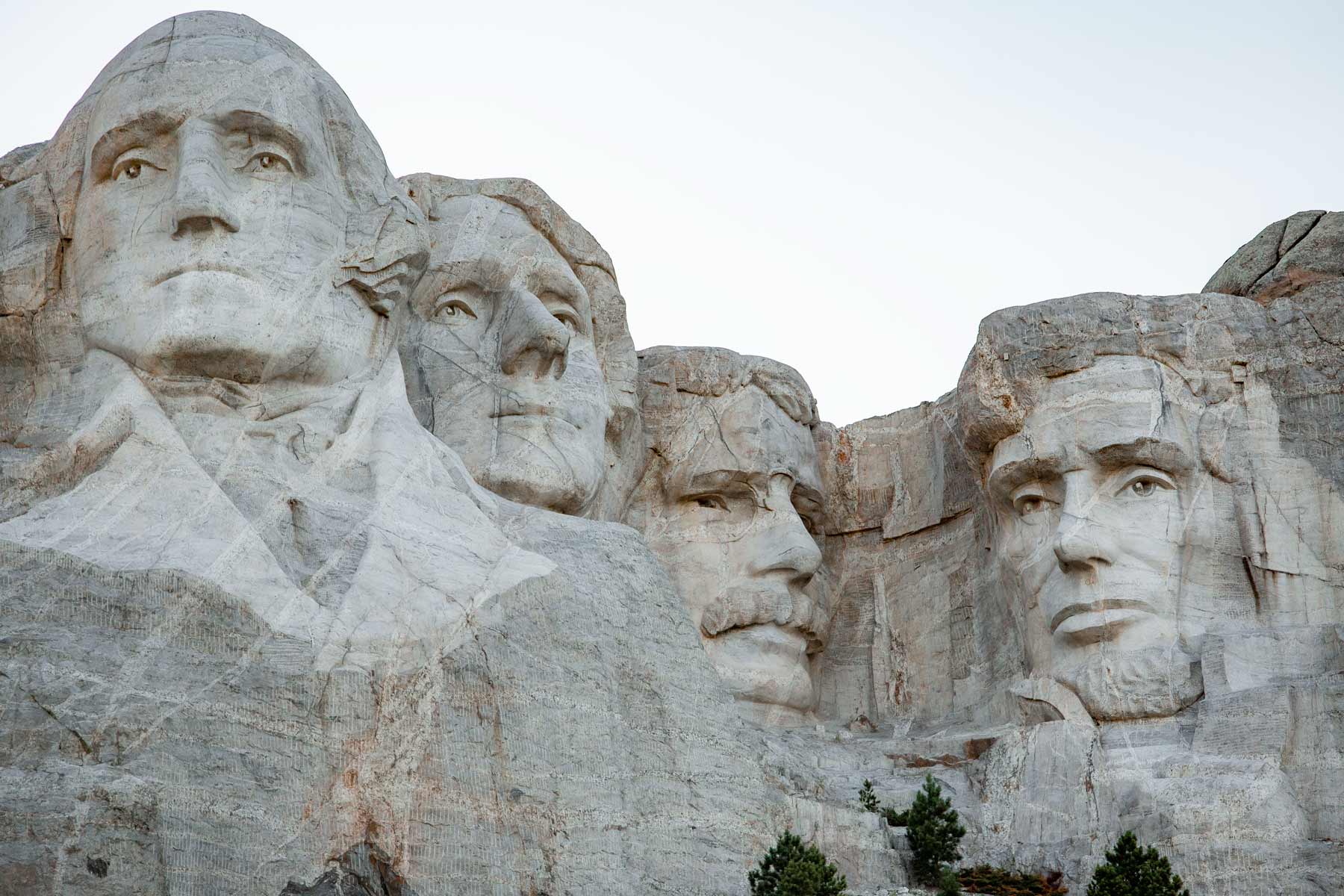
The carving of Mount Rushmore National Memorial took 14 years to complete from 1927 to 1941.
The original plan called for carving each figure from the waist up but funding ran short and that plan was abandoned.
Now if you’re interesting in learning more about Gutzon Borglum and the building of Mount Rushmore then I recommend: Six Wars at a Time: The Life of Gutzon Borglum, Sculptor of Mt. Rushmore by Howard Shaff.

Top 10 Things To Do At Mount Rushmore
More Than Just Parks has our “Top Ten” list of things to see and do at Mount Rushmore.
10. Walking the Avenue of the Flags. This short stroll frames the faces on the monument beautifully between the flags of every state in the US. How long will it take for you to find your state’s flag?
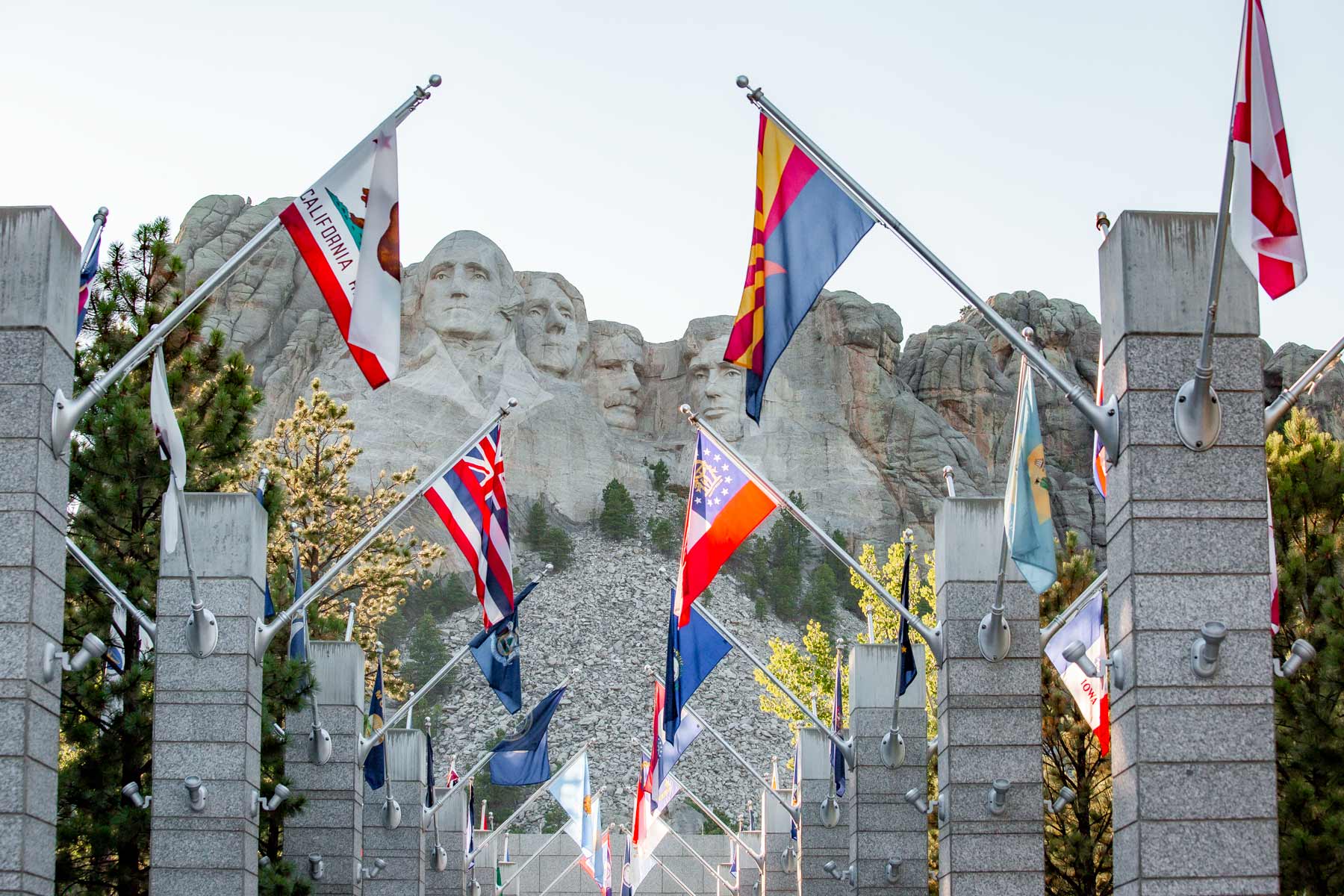
9. Seeing the faces from the Grand View Terrace. It’s the main viewpoint at Mount Rushmore and best place to see the president’s faces is from the Grand View Terrace. From this point you have clear, unobstructed views of the faces.
8. Hiking the Presidential Trail. The Presidential Trail starts near the visitor center and takes you closer to the carved faces. At just .6 miles this trail is easy taking about 30 minutes to complete at a leisurely pace but does involve 422 stairs to climb.
7. Have a “monumental meal” at Carver’s Cafe. The offerings here are basic including things like pizza, french fries, chili, sausage, eggs, biscuits, and so on.
6. Visiting the Sculptor’s Studio. Located at the end of the Presidential Trail, the Sculptor’s Studio is a great spot to enrich your visit. The studio is a small building where Gutzon Borglum worked for two years while sculpting Mount Rushmore.

Top 5 Things to Do at Mount Rushmore
5. See the Lincoln Borglum Visitor Center. There’s no better place to learn about the history and undertaking of Mount Rushmore than the Lincoln Borglum Visitor Center.

4. Have some T.J.’s Ice Cream. According to the park concessionaire who manages the ice cream stand, “this extraordinarily rich ice cream gets its sweet vanilla flavor from vanilla beans sourced from where Mr. Jefferson would have gotten them in his day.”
3. Hiking the Blackberry Trail. The Blackberry Trail is one of only two trails located within Mount Rushmore Memorial. It was designated as a National Recreation Trail in 2018 that connects with the Centennial Trail in the Black Elk Wilderness.
2. Watching the sunset across the memorial. One of the most magical times to see Mount Rushmore is at sunset as the crowds begin to die down and the mountain changes colors from grey to sunset hues.
1. Drumroll please. In the top spot we recommend staying for the Evening Lighting Ceremony. At 45 minutes in length the ceremony starts at 9pm from late May to mid August and then 8pm from mid August to October 1.
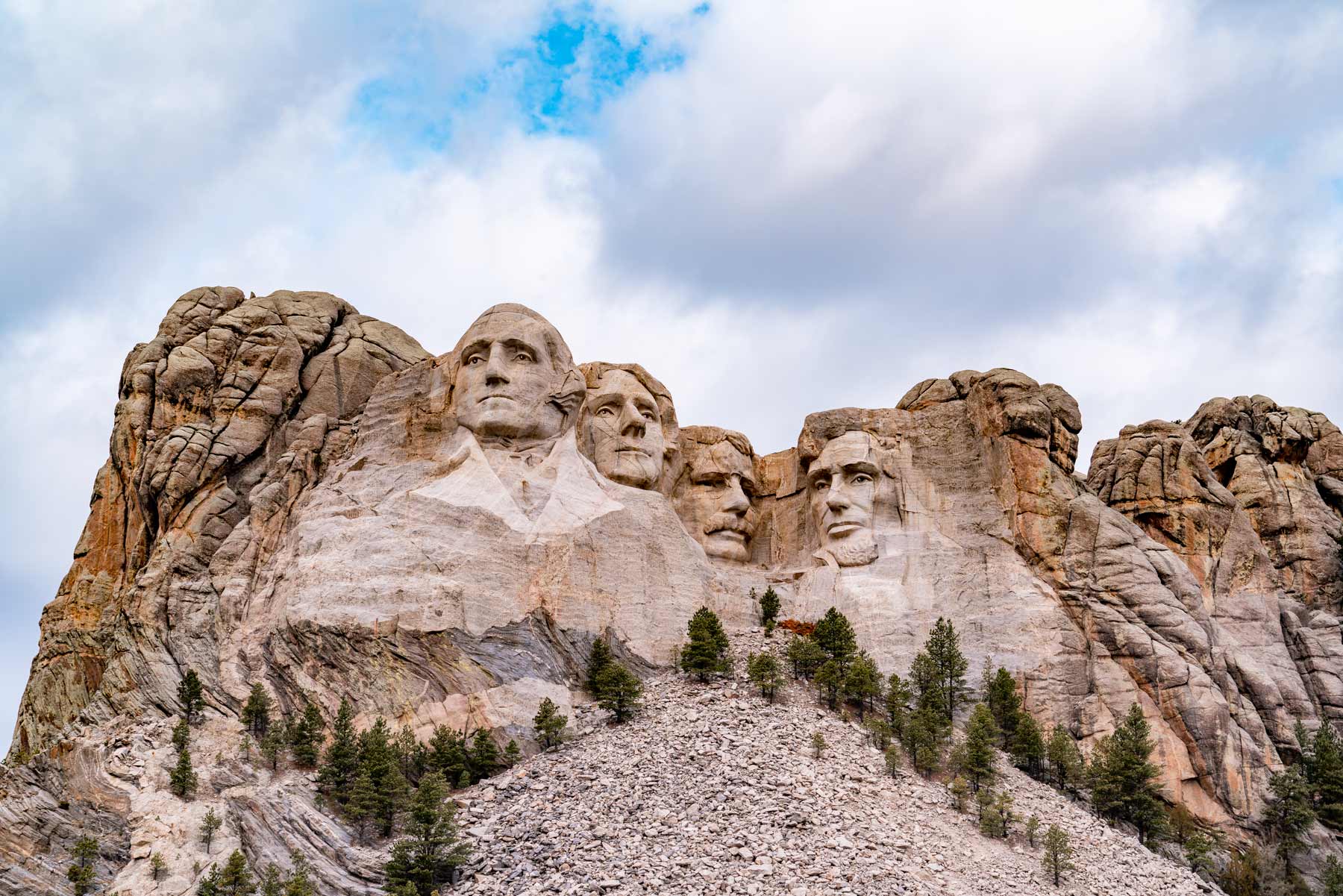
For more on Mount Rushmore check out our article: 15 HELPFUL Tips for Visiting Mount Rushmore (Things to Do + Photos)
Check Out Our Article On The Top 25 Historic Landmarks In America
As a matter of fact, More Than Just Parks has ranked what we consider to be the Top 25 Historic Landmarks In America.
Mount Rushmore National Memorial comes in at #3.
Which site did we rank as #1. Check out our article to find out.

25 Bucket List Famous Landmarks In America
6. Wind Cave National Park
Wind Cave National Park is another one of South Dakota’s beautiful national parks. This South Dakota National Park is a world-class destination home to not only what could be the longest cave in the world but also beautiful natural scenery.
The park is named after its unique and extensive cave system, which was discovered in 1881 by a local rancher, who noticed that the wind was blowing out of a small hole in the ground.
The Wind Cave system is one of the longest and most complex cave systems in the world, and it is known for its unique and intricate formations, including boxwork, a type of calcite crystal formation found nowhere else in the world.
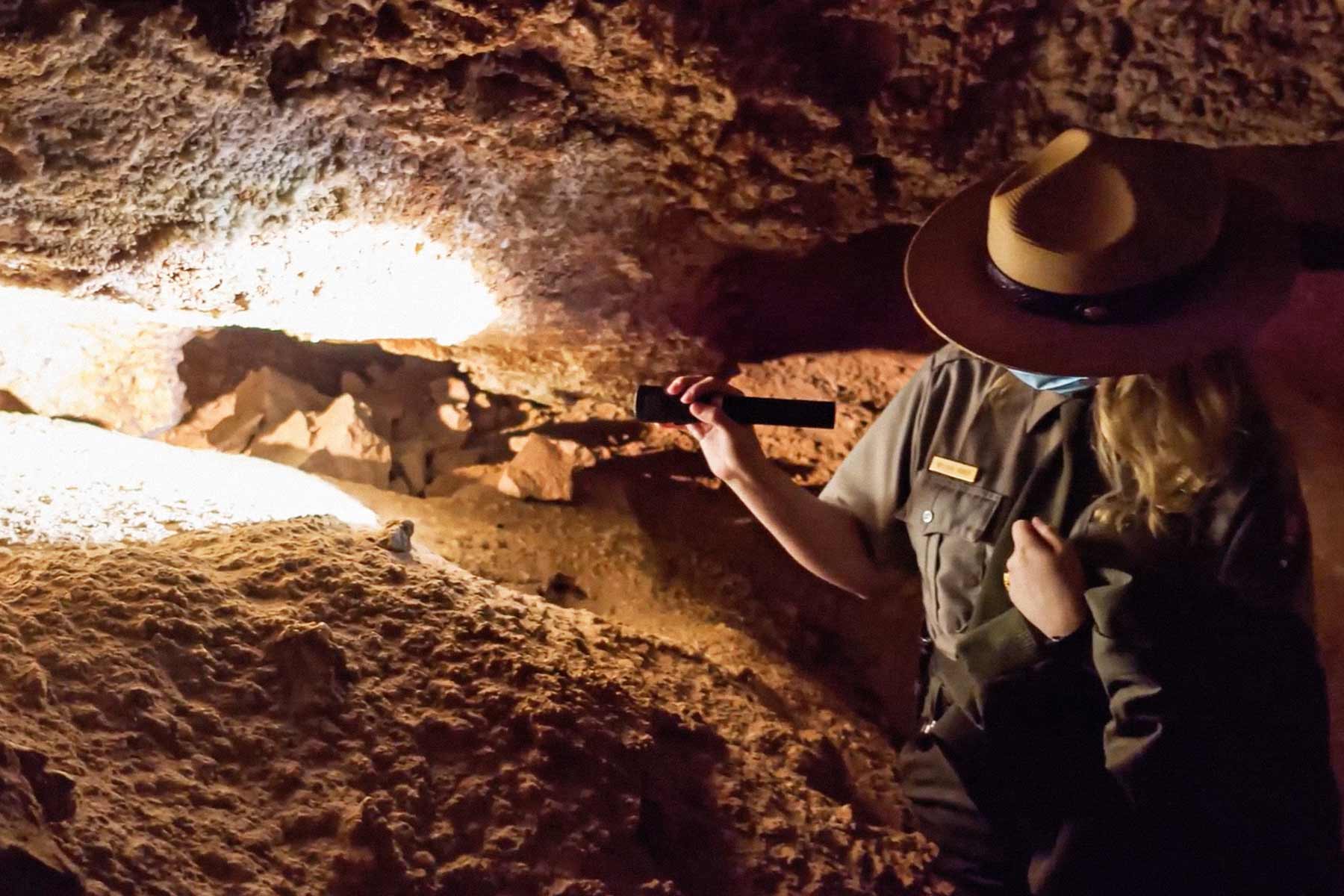
It’s America’s 7th National Park
The cave was explored and mapped over the years, and its scientific and scenic value led to its designation as a National Park in 1903, making it the 7th National Park in the United States.
In addition to the cave, Wind Cave National Park is also home to a diverse array of wildlife, including bison, elk, and pronghorns, as well as rolling prairies and pine forests.
The park offers a variety of recreational activities, including hiking, camping, wildlife watching, and cave tours.

If you like exploring caves then check out our article on 10 amazing facts about Carlsbad Caverns
While you’re at Wind Cave, I recommend the following activities:
- Visit The Natural Entrance To Wind Cave: It’s the largest natural opening into Wind Cave without going on a tour. This small hole is one of the only known natural entrances into the cave. Lakota oral tradition speaks of how the first bison and humans emerged from this deeply spiritual place.
- Take A Hike Along One Of Wind Cave’s Beautiful Trails: Wind Cave National Park has over 30 miles of hiking trails on the surface and provides visitors the opportunity to view pristine Black Hills scenery.
- Watch The Wildlife: View some of North America’s most iconic wildlife while enjoying Black Hills scenery.
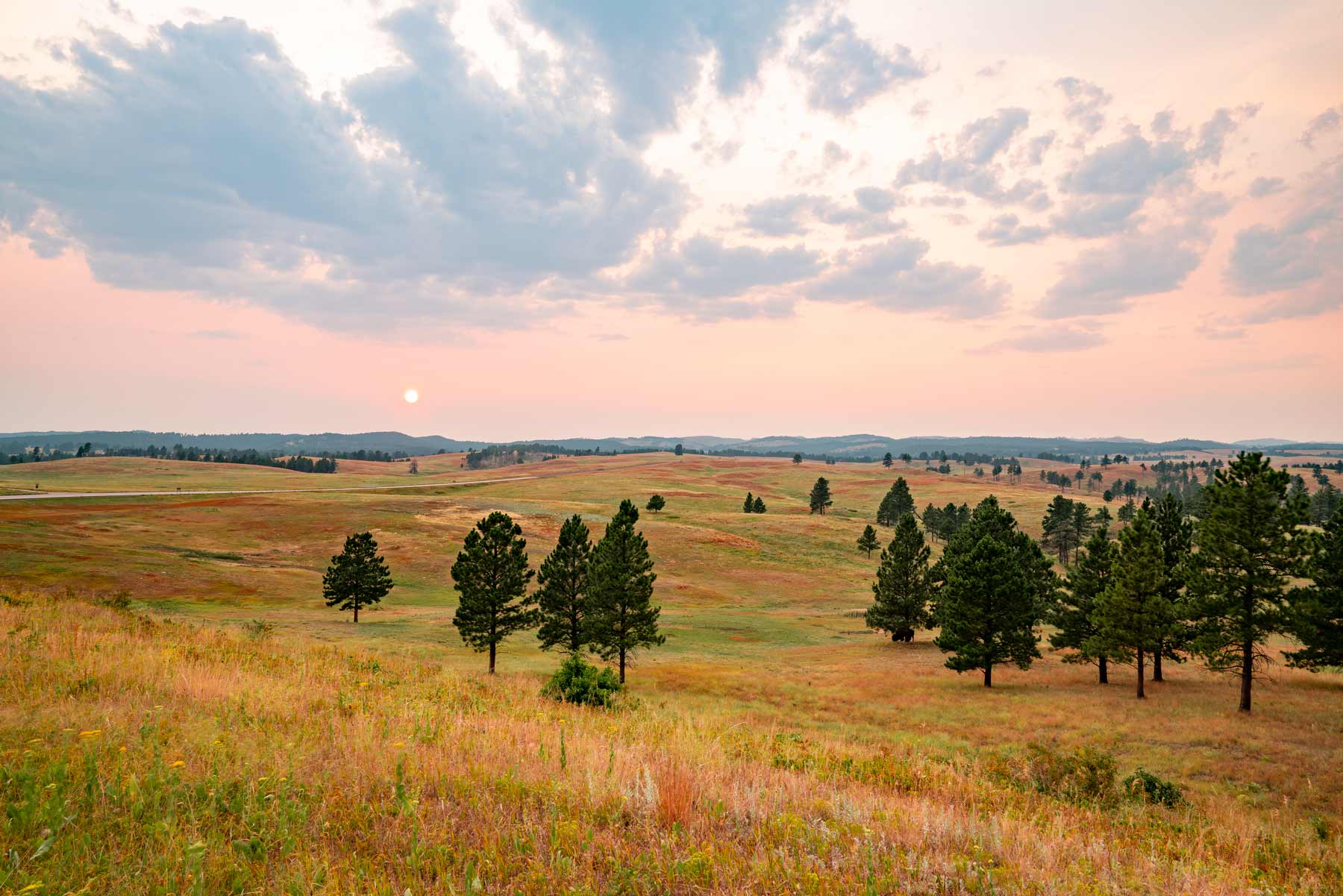
Planning a trip to Wind Cave? Check out our article: 10 Epic Things to Do at Wind Cave National Park
Check Out Our Wind Cave National Park Film
Situated where the Northern Great Plains meet the Black Hills, Wind Cave National Park spans more than 33,000 acres of spectacular views and subterranean wonders. Iconic wildlife, teeming forests, rolling hills, and one of the largest and most fascinating caves in the world.
Wind Cave truly is more than meets the eye. Journey with us as we explore life above and below ground in one of the most scenic corners of the United States.
South Dakota National Parks FAQ
Mount Rushmore is located in the heart of the Black Hills which are full of really incredible sites including two national parks, two national monuments, a national forest, a national grassland, state parks, and more. Rushmore is one of the most visited national parks in South Dakota.
The following is a list of must-see historic sites in South Dakota:
Mount Rushmore National Memorial
Badlands National Park
Jewel Cave National Monument
Lewis & Clark National Historic Trail
Wounded Knee National Historic Landmark
Minuteman Missile National Historic Site
Deadwood Historic District
Crazy Horse Memorial
Wind Cave National Park
USS South Dakota Battleship Memorial
City Of Presidents
Tatanka
National Music Museum
The Corn Palace
Old Courthouse Museum
Why Trust Us About South Dakota National Parks?
We’re Jim Pattiz and Will Pattiz, collectively known as the Pattiz Brothers (and sometimes the Parks Brothers) and we absolutely LOVE the national parks.
You should probably know that we don’t just make this stuff up out of thin air. We’ve spent our entire adult lives exploring and filming America’s national parks and public lands.
We’ve worked with the National Park Service, the Department of Interior, USDA, and the U.S. Forest Service for years creating films on important places and issues. Our work has been featured in leading publications all over the world and even some people outside of our immediate family call us experts on the national parks.
Meet The Parks Brothers
Map Of South Dakota National Park Sites
List Of National Parks In South Dakota
- Badlands National Park
- Jewel Cave National Monument
- Lewis & Clark National Historic Trail
- Minuteman Missile National Historic Site
- Mount Rushmore National Memorial
- Wind Cave National Park
We Hope You’ll Follow Our Journey

Our goal here at More Than Just Parks is to share the beauty of America’s national parks and public lands through stunning short films in an effort to get Americans and the world to see the true value in land conservation.
We hope you’ll follow our journey through the parks and help us to keep them the incredible places that they are. If you’re interested in joining the adventure then sign up below!
More Helpful Articles
Hiking the Castle Trail: Castle Trail: Epic Hikes in Badlands National Park (Photos + Guide)
Hiking the Notch Trail: Hiking the Notch Trail in Badlands National Park (Photos + Guide)
Badlands NP Guide: Helpful Guide to Badlands National Park
Things to Do in Badlands: 20 Incredible Things to Do in Badlands National Park
Things to Do Wind Cave: 10 Epic Things to Do at Wind Cave National Park
Visiting Mount Rushmore: 15 Helpful Tips for Visiting Mount Rushmore
Things to Do Near Rushmore: 25 Epic Things to Do Near Mount Rushmore
Black Hills National Forest: Comprehensive Guide to the Black Hills National Forest
south dakota national parks, national parks of south dakota, national parks in south dakota, south dakota national park, south dakota national parks, national parks of south dakota, national parks in south dakota, south dakota national park, south dakota national parks, national parks of south dakota, national parks in south dakota, south dakota national park, south dakota national parks, national parks of south dakota, national parks in south dakota, south dakota national park,


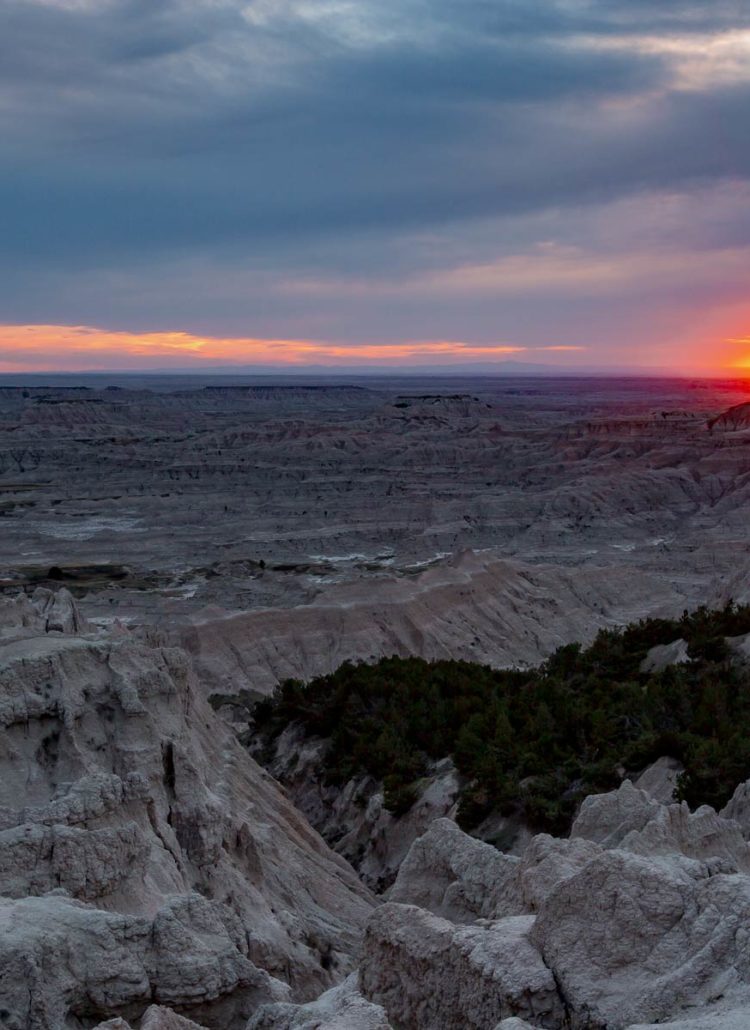
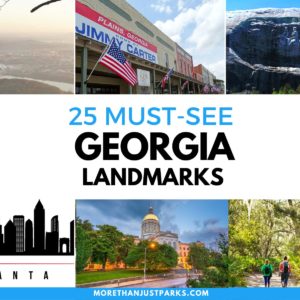

Thank you so much for the amazing information.
My husband and I are planning next year vacation, to South Dakota..
So glad you found our article useful! South Dakota is one of the great truly American road trip destinations. I’m sure you’ll have a blast!
Your information is wonderful. Our kids are 12 and we only have 5 days which includes flying to and from our home. We want to see Mt Rushmore, what other parks should be our priority?